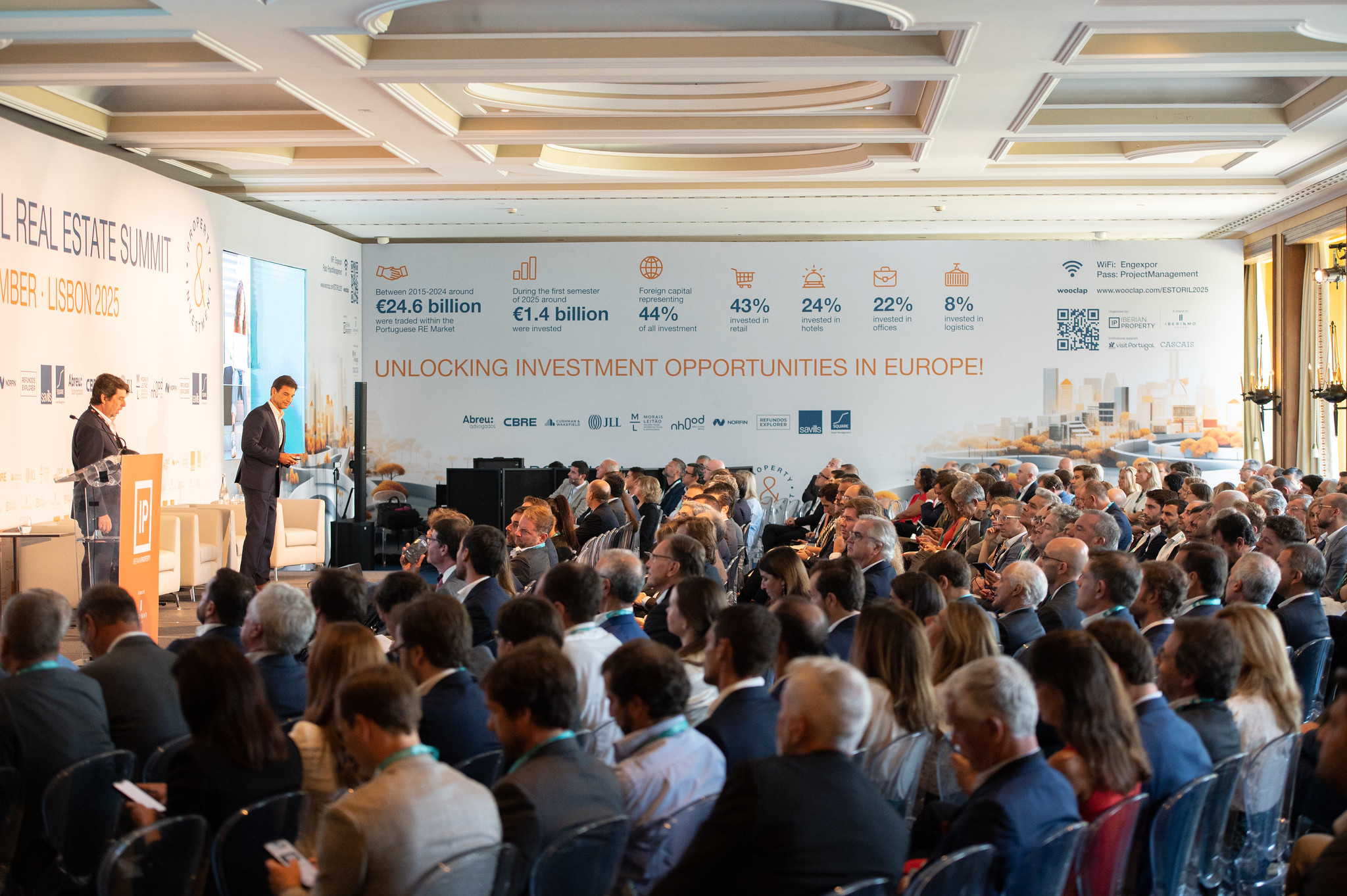On stage, Paulo Sarmento, Head of Transactional Services Portugal at Cushman & Wakefield, opened by noting that 2024 was a strong year for investment in Portugal. Retail dominated activity, with strong appetite in high street and tourism-related assets pushing yields down. “We are securing good returns and compare well with other European markets,” he stressed.
Augusto Lobo, Head of Capital Markets (CRE) at JLL Portugal, agreed, adding that shopping centres and high street retail are seeing strong rent growth and near-full occupancy. “If we had more shopping centers, we would most likely have more transactions, and therefore a higher investment volume” underlining that demand exceeds supply. Iberia, he reminded, was the top retail investment destination in continental Europe.
Turning to living sectors, Sarmento pointed to PBSA as the “rising star,” with international student numbers surging. “There is still plenty of room for growth,” he argued, while senior living remains underrepresented despite clear demographic drivers. Augusto Lobo added that multifamily and Build-to-Rent hold “great potential given the imbalance between supply and demand.”
In offices, both consultants stressed strong fundamentals but limited availability. “Rents have risen by 45% in Lisbon and 24% in Porto since 2018, yet Grade A supply remains scarce,” Lobo observed, predicting continued pressure on prime stock. Offices, he added, increasingly resemble hospitality, with service and user experience at the core.
Logistics is another area where Portugal lags in supply. Sarmento highlighted that 87% of pipeline projects are already pre-leased, underscoring intense occupier demand. Data centres, meanwhile, were described as the “new kid on the block”: Portugal combines location, security, stability, and a great access to green energy, making it a future hotspot.
Both concluded that Portugal’s fundamentals are robust, but scaling depends on easing regulatory bottlenecks and delivering more quality stock. “The capital is there,” said Sarmento, “what we need is product.”

“Build-to-Sell Is BTR’s biggest enemy”
Moderated by Richard Betts, the investor roundtable brought together leading voices from capital, development, and banking to reflect on where the best opportunities lie in Portugal’s real estate market, and what obstacles still stand in the way of scaling projects.
From the outset, Vanessa Gelado, Senior Managing Director and Head of Spain & Portugal at Hines, made clear that the company’s focus is firmly on living sectors, particularly purpose-built student accommodation (PBSA). Yet she acknowledged financing challenges: “PBSA is still harder to finance than Build-to-Rent, but if the assets are strong and cash flows assured, it remains a good time to invest.”
Frédéric Jariel, Co-Head of Real Estate at Tikehau Capital, picked up the Build-to-Rent theme, calling it “a good asset class” for Portugal’s next growth phase. However, he warned that “Build-to-Sell is BTR’s biggest enemy,” still capturing the bulk of capital and investor attention. Offices, he added, can also be attractive, provided they are in the right locations and aligned with new workplace expectations.
For Juan M. Acosta, Chief Investment Officer at Rockfield Real Estate, the real opportunity lies in flexible living formats. “We are getting older, we need more housing, and it has to be more affordable. Investors will follow those structural needs,” he argued. Flex-living and coliving, halfway between student housing and conventional residential, could bridge the gap. Yet he cautioned that regulation and delivery times remain major hurdles, particularly in inner cities like Lisbon and Porto.
Duarte Soares Franco, Board Member at Habitat Invest, offered a developer’s perspective, insisting that “we sell lifestyle.” His company continues to back Build-to-Sell and hospitality projects, while preparing to launch a new line of touristic apartments. But he did not shy away from pointing out difficulties: construction costs have risen significantly, and “regulations are complex and slow—we need much more flexibility.”
Representing the banking side, Francisco Ravara Cary, Executive Board Member at Caixa Geral de Depósitos, stressed that “housing dominates financing, particularly Build-to-Sell.” While the bank also supports tourism projects and some offices, its conservative approach remains rooted in the residential market. “We can provide large amounts of financing at competitive rates,” he said, noting that ESG-aligned projects can sometimes secure lower financing costs. Still, he admitted that slow licensing processes push up costs and weigh on appetite.
As the conversation turned toward Portugal’s position in the wider European context, Gelado argued that both Portugal and Spain should aspire to become long-term staples of institutional and private investor portfolios, rather than tactical plays. “There has not been a better time in the past 15 years to raise equity for Iberia,” she said, but channeling that capital requires competitive pricing and compelling narratives in investment committees.
Soares Franco agreed on the growth story but warned against complacency: while southern Europe now looks attractive, northern markets are opening new windows of opportunity. “Yes, Portugal no longer needs explaining—the growth is evident—but we must avoid overpaying,” he cautioned.
In closing, the consensus was that Portugal remains firmly a “buy” market for 2025/26, with living and hospitality leading the pack. But the discussion also revealed clear dividing lines: while developers and investors see promise in PBSA, BTR, and flexible living, banks still anchor financing in traditional Build-to-Sell. The sector’s future will depend on whether regulatory reforms and financing models can evolve quickly enough to match investor appetite.
